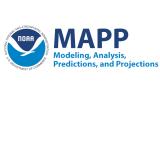Improving Understanding of the Interacting Factors that Influence the Evolution and Severity of U.S. Droughts in Present and Future Climates

The increasing demands that will be placed on the future water and agricultural resources of the United States—as populations rise and the climate changes—make an improved understanding of drought, its predictability, severity, and projected future changes more critical than ever. However, our ability to accurately forecast individual droughts will always be limited by the important role played by internal atmospheric variability, which is inherently unpredictable on the timescales of relevance for seasonal to decadal drought. One area of potential progress is our understanding of the role of complex and non-linear feedback processes in altering drought severity and impacts. Understanding all the relevant feedback processes that play a role in drought evolution, faithfully representing them in our models, and understanding how they are projected to change in a warmer climate, will go a long way to enhancing our capacity to predict impacts arising from drought events.
Using the community Earth System Model (CESM), a state-of-the-art Earth System Model, this project will fully characterize the role of land-atmosphere coupling processes in governing drought severity. Capitalizing on recent land- and atmosphere-model improvements, the research team will use a constrained circulation ensemble approach to systematically quantify how the inclusion of a variety of land-atmosphere processes impact the evolution and severity of drought events and how we expect these impacts to change in a warmer climate. These processes include plant hydraulics, dust emissions, irrigation, wildfires, and dynamic vegetation.
This project is part of the NIDIS/MAPP Drought Task Force IV.
For more information, please contact Joel Lisonbee (joel.lisonbee@noaa.gov) and Marina Skumanich (marina.skumanich@noaa.gov).
Research Snapshot
What to expect from this research
- The research team will publish peer-reviewed publications describing study results, as well as presentations to the scientific community.
- This research will advance our fundamental understanding of the complex interacting feedbacks that influence drought severity and determine their impacts, both in the present and future climate. This will improve our capacity to predict drought in the near and long term using Earth System Models and will inform model development efforts worldwide by the identification of important interacting processes that should be included for accurate drought simulation.
- The research will generate global Earth System Model simulation output, and the data will be archived for public access in the NCAR Climate Data Gateway.



